Preliminary work:
Diagnosis - Diagnostic Trouble Code (DTC) Memory  12 12
Diagnosis - Fault Frequency, Time Span  13 13
Diagnosis - Actual Values  14 14
Electrical Wiring Diagrams:
Electrical Troubleshooting Manual, Model 129, Vol. 2, group 91,
Electrical Troubleshooting Manual, Model 140, Vol. 2, group 91,
Electrical Troubleshooting Manual, Model 170, Vol. 2, group 91,
Electrical Troubleshooting Manual, Model 202/208 Vol. 2, group 91,
Electrical Troubleshooting Manual, Model 210, Vol. 2, group 91
|
 CAUTION! CAUTION!
Risk of injury if airbag units and ETR units are ignited accidentally or if stored with the opening end facing downward which may cause the accidentally ignited components to fly about causing injury. Danger to persons also exists if the components are disposed of by cutting apart with cutting torches or other cutting/separation devices. Danger also exists if disposing the untriggered units via refuse collection or via smelting/carbonizing companies.
Protective measures/Supervision
- Place removed airbag unit with the opening side facing upward.
- Allow only properly trained dealer staff to supervise, purchase, transport, store, test/replace any of the SRS components.
- Install all airbag or ETR units once pulled from the parts department.
- Protect all airbag or ETR units from any sparks, open flame, or temperatures above 100°C.
- Do not transport airbag or ETR units in the passenger compartment, rather transport securely in their original packaging in the trunk.
- Do not allow oil, grease or cleaning agents come in contact with the airbag or ETR units
- Perform SRS tests only with approved test equipment (such as HHT), while installed in the vehicle without occupants.
- When reconnecting the vehicle battery or any outside electrical source, with the ignition turned ON, do not allow any occupants inside the vehicle.
- Airbag or ETR units which have been dropped from a height greater than 18 inches must be replaced.
- Prior to disposing the airbag or ETR units, the units must be made un-useable by discharging.
- In order to render the airbag and ETR unit un-useable, the specially made discharge harness must be used and at the same time maintain
a safe distance of at least 33 feet from the units being discharged.
Prior to undertaking any chassis/body repairs, installation/repair work on airbag and ETR units, or any components which come in contact with the airbag and ETR units, or are part of the electrical circuit of airbag and ETR units (such as installation of the steering wheel), the following conditions must be met:
- Remove ignition key.
- Disconnect any outside source of elctrical circuit (i.e. battery charger).
- When performing interior repairs or welding operations, disconnect the connector from the SRS control module.
|
Preparation for Test (continued):
1. Review section 0,  11, 11,  12, 12,  13, 13,  20, 20,  21, 21,  22, 22,  23, 23,  31, 31,  32 32
2. Check fuses.
3. Battery voltage > 11 V.
4. Insert vehicle specific test module into Hand-Held Tester (HHT).
5. Connect (HHT) as per connection diagram, see section 0
 CAUTION! CAUTION!
Do not connect battery trickle charger.
|
Initial Display
Display appears approximately 5 seconds after the HHT is connected to the vehicle (example: Model 140). |
Test equipment; See MBUSA Standard Service Equipment Program
| Description |
Brand, model, etc. |
| Digital multimeter |
Fluke models 23, 77 III, 83, 85, 87 |
Shop-made Test Cables for connecting Airbag Squibs
Parts Required for Test:
1 Connection piece 034 545 63 28
1 Connector 019 545 19 28
2 Wire with 2.5 mm socket (from electrical connector set)
2 Wire with 2.5 mm pin (from electrical connector set)
 CAUTION! CAUTION!
All red colored connectors and connections of the airbag squibs are constructed with a short-circuiting bridge. Upon disconnecting, the squib wire and squib are automatically short-circuited, to prevent airbag deployment.
Review corresponding ETM document for each model for location/identification of Airbag Squibs and also prior to connecting any test cables.
Thus all repairs can be accomplished with only the ignition key removed.
Accessories (for vehicles with ASCR installed only):
Child seat "Babysafe"
 CAUTION! CAUTION!
The battery minus cable must be disconnected and covered, as well as the SRS control module (N2/2) disconnected prior to use of any electrical welding equipment.
Additionally, the previously used SRS test connection is no longer present.
Model 140
10-pole connector, (X11/13, Figure 2) between cockpit and frame floor.
Models 202, 210
2-pole connector, (X28/12, Figure 4) for front passenger airbag between cockpit and frame floor.
Models 170, 210
2-pole connectors, (X35/1 [left front door separation point], X35/2 [right front door separation point]) for left/right side airbag.
|
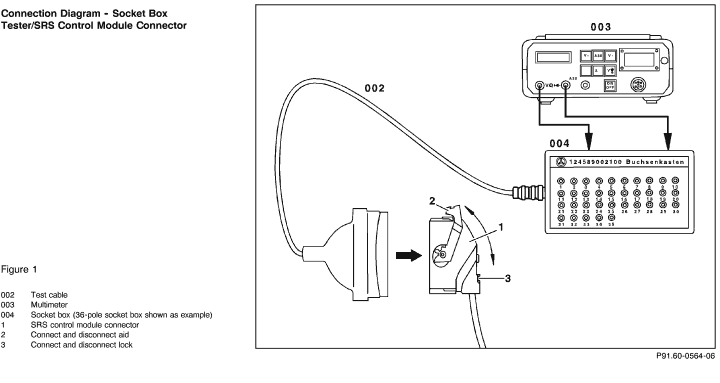 |
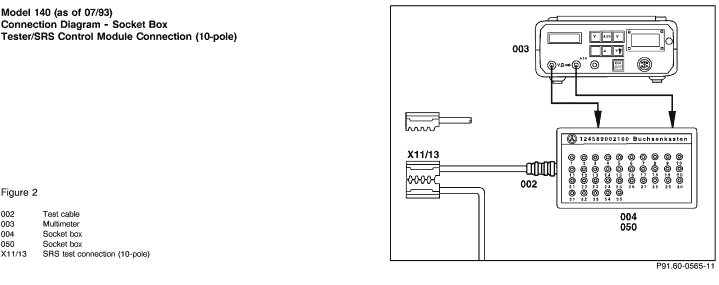 |
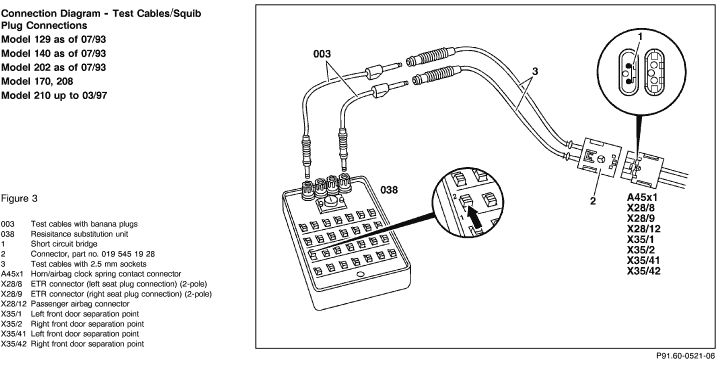 |
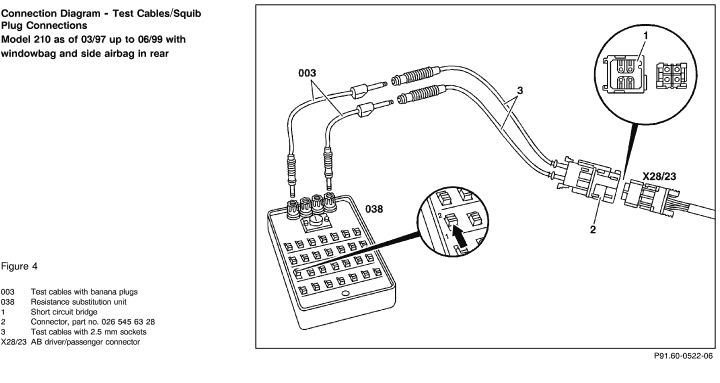 |
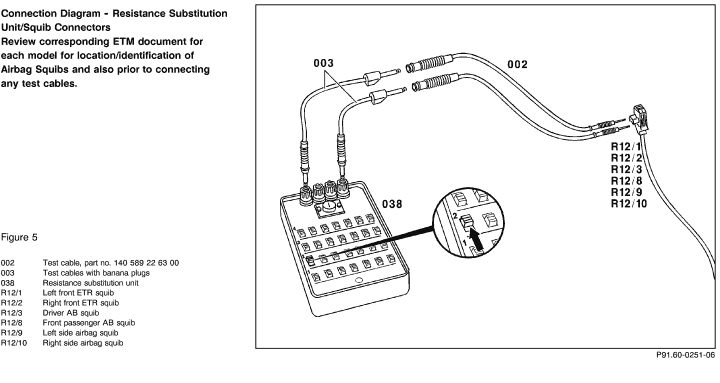 |
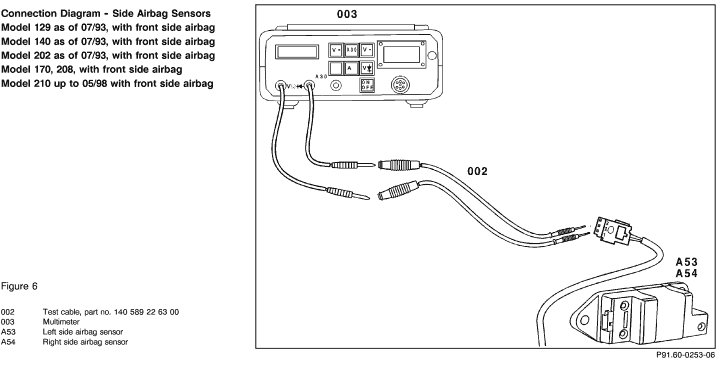 |
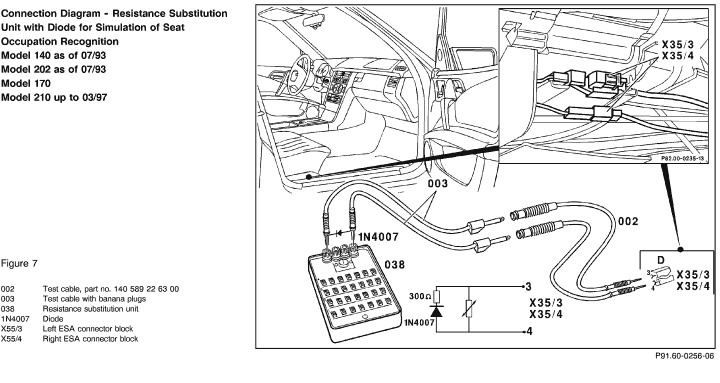 |
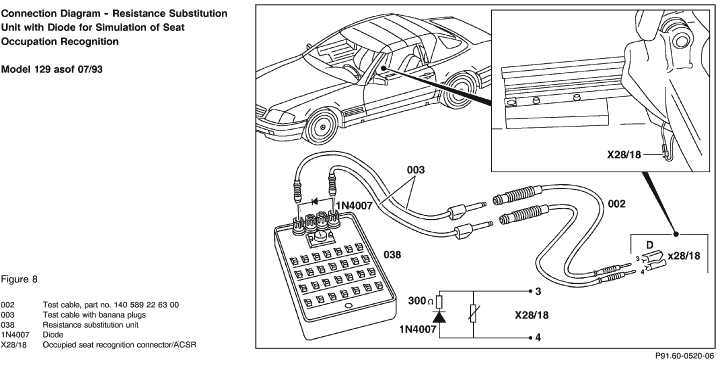 |
|
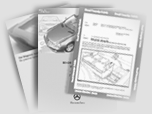

 Printable version
Printable version


 12
12 CAUTION!
CAUTION! 









